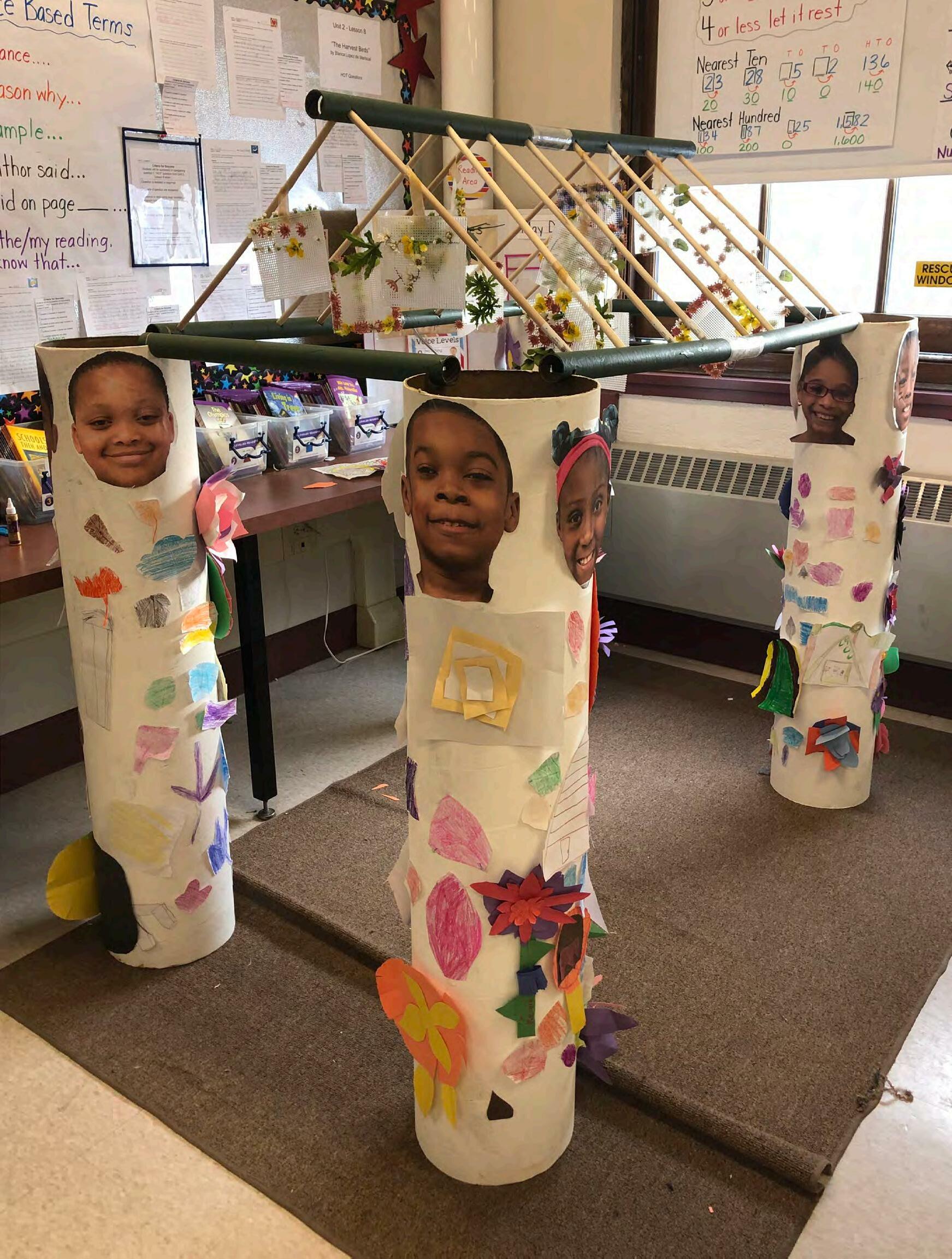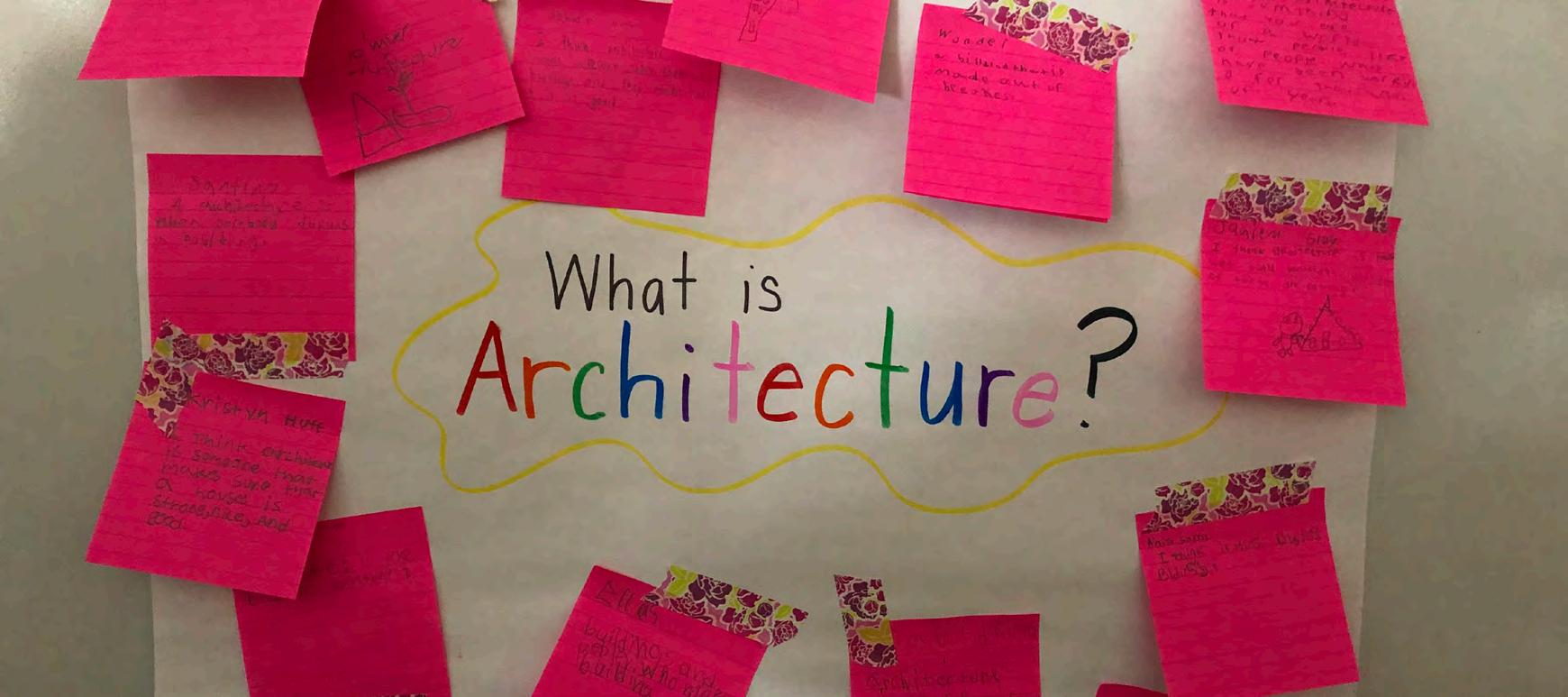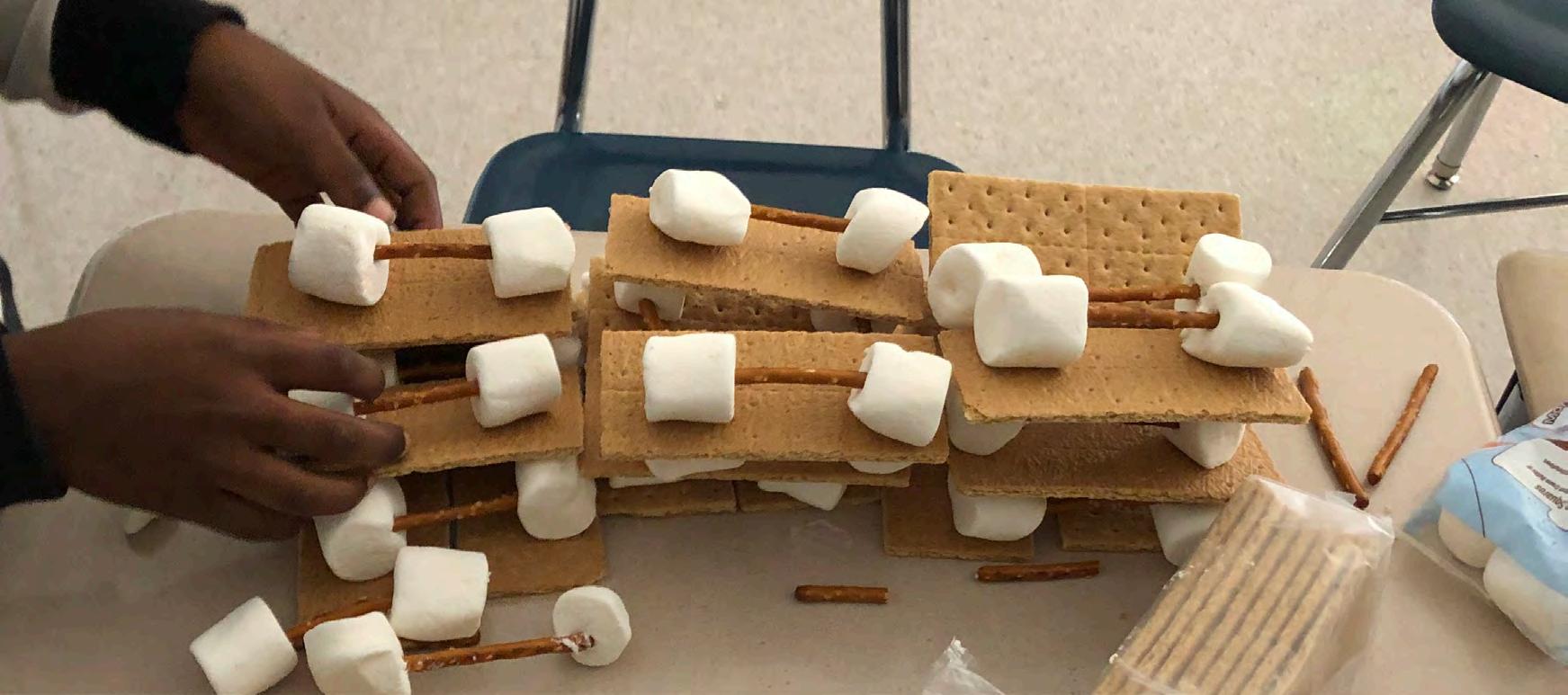
7 minute read
CURRICULUM
from 2019 ARCH & ED
by Thea Seno
PROGRAM CURRICULUM
No matter the outcome of the project, it was our objective to always encourage positive traits and promote self esteem within the students. It was also the teacher’s objectives to make sure that students are engaging productively as a whole or as an individual. The BPS (Buffalo Public School) goal that we’ve chosen as a group was that, “All students will demonstrate the ability to think logically, critically, and creatively, including processes for inquiry, reflection, problem posing, problem solving, and decision making.” Even if we had a vision for the outcome of the project, we were prepared to work with the students in anyway possible in order to achieve the goals and objectives.
Advertisement
To introduce architecture into their core subjects, we decided that their end project will be a Nature’s Playhouse. By introducing the importance of the primitive hut in correspondence with nature, we’re allowing the connection of architecture to shine within their history and science subjects.
The objective was to not only make an architectural connection with nature, but to show the students that architecture surrounds them within their environment and everyday life. It was to also show them early architecture to emphasize the difference in development compared to this day and age. Some major key words we aimed for to help them with the curriculum was architecture, built environment, hut, column, capital, structure, material, and ornament. All components to help with the creation of their version of the primitive hut.
The hut consists of four “columns” as the base and includes a roof structure. Each piece was painted by the students for a more aesthetically pleasing project. We’ve also decided that the students themselves will represent the ‘capital’ of a column. Then they decorated their hut with the different projects they’ve accomplished throughout the curriculum. The way the hut was designed was to purposely allow the students to be able to fit underneath it if they wished.
To accomplish the final project we had a total of 9 classes that consisted of a different activity each day. We create different lessons each day for them to learn a variety of material and vocabulary. At the end of it, we give them an activity so they could physically understand what we were explaining just minutes before. During the early stages, the activities were designed to teach the students the basics of structure, along with the different ways to create it and relate it to the primitive hut. During final production mode, they began different projects that were all types of pieces which soon became Nature’s Playhouse.

6 7
IN-CLASSROOM SESSION 1
OCTOBER 9, 2019
Attendance in classroom: 14/16
What is architecture?
When we first arrived to the classroom the students had prepared a sign writing down what they initially believed architecture was. It was a nice introduction to the lesson for the day as they were going to be introduced the definition of architecture and what it is an architect can do.
Today was the day they were also getting introduced to the meaning of the ‘built environment’. The students were shocked as to how much architecture influenced their everyday lives and how much they are surrounded by it, besides actual buildings.
To make sure they were engaged throughout the presentation, we added fun interactive questions like, “which one would you rather live in?” This question was just an example showing them how architecture can be seen differently within everyone. They were great at participating and asking questions and were curious about the images on the slides.
They learned other vocabulary words during this first lesson like precedent, creativity, design, and most importantly, structure. To introduce structure we related it to their skeletal system. For example, to quote our presentation:
“Your skeletal system helps support the body much like structure supports a building!”
It was important that the students grasped the concept of structure, as this was the basis for the final product of the hut they would be producing. They did a wonderful job asking questions and comprehending the different ideas of what structure entails.
The activity we set up for them to understand the idea of structure was having a Tallest Tower Contest. The rules were that the structure that they would create out of graham crackers, pretzel sticks, and marshmallows would have to stand on its own. The students were put into groups of two to work together and share the material to create their structures.
It was great seeing the different approaches the students used to creating their structures. Some stacked all three material while others only used two out of the three to develop their ideas. Nonetheless, the outcome of this lesson was positive because they each saw how other groups approached it and got a sense of different ideas of how they could potentially create a structure next time.
In the end, the students were very productive and had a lot of fun being able to experiment and take what they’ve learned during our presentation to make their ideas come to life. They worked well together and couldn’t wait to take home and eat their creations! At least we got some good pictures before they ate their structures.
-‘What is Architecture?’ Sign: The students all wrote down their thoughts on what they believed architecture was before our lesson. -The ‘stacking’ method created by a group using all three materials. -The ‘connection’ method created by a group only using marshmallows and pretzels. 8



10

STUDENT QUOTE
11
Picture showing Russell (left) and Jaidon (right) helping Wonder and Elias on their different methods of structure.
12

IN-CLASSROOM SESSION 2
OCTOBER 16, 2019
Attendance in classroom: 16/16
For this lesson, the students were introduced to the correlation between architecture and nature. We first did a recap on structure, because it was essential to know that to introduce this lesson. The students did well on providing information that they’ve learned last class. We provided a small history lesson on how technology didn’t exist back then to create modern material. We explained how people used to rely on nature in order to create their homes.
‘Huts’ were introduced today. We emphasized the idea that the hut was an example of the relationship between early architecture and nature and how it was the basis for architecture for years to come. They were interested to see the types of huts and how they differed from one another.
The ‘column’ was also a strong vocabulary term that the students learned during this lesson. They did a great job relating a building’s column to a natural column (the tree trunk). They got the connection fairly quickly and were impressed that people used large, natural material like tree trunks to create their huts. We explained the tipi, huts with four columns like a house, stacked huts, etc. They were reminded of the different creations they made themselves during the first lesson to emphasize the different structural methods.
During the end of the presentation we introduced the roof and how roofs have different structures as well. They grasped that natural material was a strong component in creating these huts. Materials like wood, animal skin, straw, and leaves were just examples of what would help protect people from natural elements like wind, sun, and rain.
After the students learned about different structural elements in a hut, and how nature was a big factor in creating them, they then learned about structural elements that could be found in nature.
To emphasize that structure/architecture is found all around them, they collected leaves and embossed them in color to show the structure behind a leaf. They were excited to use all kinds of colors to see what their leaf structure would turn out to look like.
It was a fun activity, and instead of doing only the two that we had asked for, most of them made more because of the cool outlines that each leaf structure created.
Photo showing Isaiah’s different leaf structures experimenting with different shades of blue.
13






